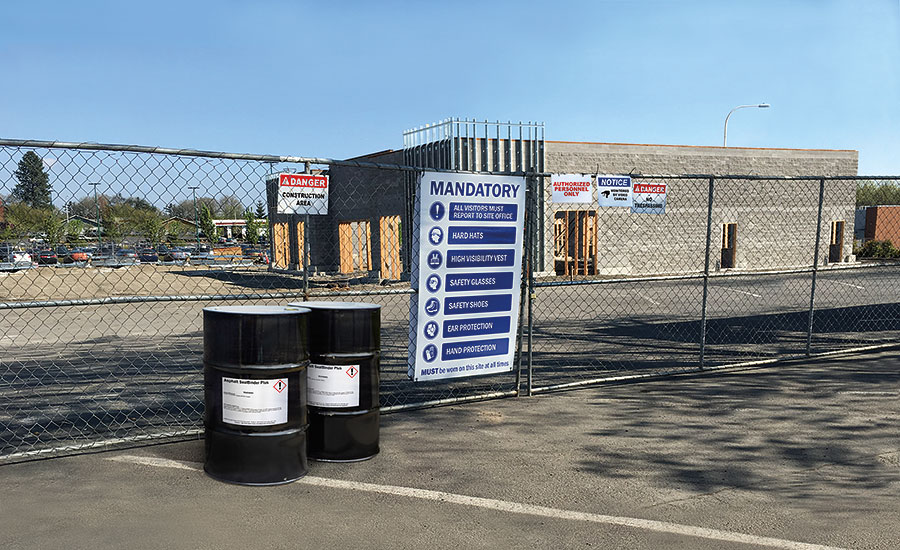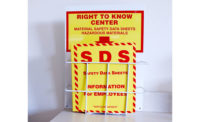The U.S. Department of Commerce, Bureau of Economic Analysis, reports that the construction industry contributed 4.2 percent of GDP in 2016, the highest amount since 2008. The first quarter 2017 construction outlook published by management consulting and investment banking firm, FMI, forecasts an increase of 6 percent overall for the construction industry in 2017 with the lodging sector leading growth at 9 percent.
But even with a more bullish outlook, there are concerns. Regardless of the construction sub-sector polled, industry professionals indicate that there is a shortage of qualified construction workers to meet the demand for new projects. To fill the supply gap more workers will need to be quickly trained in specialty trades as well as the best practices to keep themselves and coworkers safe. Across industries, OSHA reports that, after workplace fall protection, improper hazard communications (HazCom) produced the most violations in 2015. In the next few years, it will be important for construction firms to invest in safe practices and effective HazCom programs at work sites.
When construction workers demolish, repair, or build, they can be exposed to a variety of chemical hazards.
Chemical hazards by construction phase
Each phase of a construction project is unique and involves a wide range of trade specialists, tools, and materials. Likewise, the potential chemical hazards are different at each phase, too. Workers and the job-site competent person must anticipate what chemical hazards may occur at each construction site.
The stages of construction can be portrayed in eight phases, each using a slightly different set of tradespeople, activity, and chemical hazards.
- Mobilization Phase — construction tools and equipment are brought to the construction site. Work may include fencing the plot, or installing labor trailers and service facilities. Hazardous atmosphere in this phase can result from carbon monoxide exposure from gasoline and diesel engine exhaust.
- Ground Phase — the plot is prepared for the sub-structure. The ground is graded for proper water runoff flow, excavated, trenched, paved, and surfaced. If the plot is a brownfield property then structures may need to be demolished and hazardous waste removed. Hazardous conditions can occur due to asbestos and lead from construction built before 1980, asphalt/bitumen emissions, or carbon monoxide from gasoline and diesel engine exhaust.
- Sub-Structure Phase — the structure that contacts the earth is built. This includes foundation, ground floor, short/neck column, and grade/tie beam construction. Hazardous chemicals in this phase appear during drilling, welding, or concrete material handling, including crystalline silica dust, hexavalent chromium, and zinc, cadmium, and beryllium.
- Super-Structure Phase — the structure above the ground is built. This includes column, slab, beam, staircase, and roof. Hazardous chemicals can exist in materials ranging from pressure-treated wood to roof tiles, and vary from arsenic to gypsum.
- Masonry Phase — the wall, plaster, and tile work. Hazardous conditions can occur due to mortar/grout and sealants, including exposure to silica and plaster dust, or hexavalent chromium.
- Service Phase — installation of mechanical, electrical, and plumbing. Chemical hazards can result from welding and soldering, and may include lead, zinc, cadmium, hexavalent chromium, and beryllium.
- Finishing Phase — drywall installation, painting, wall hanging, wood or metal work, flooring and carpet installation. Hazardous chemicals may be present when using paints, carpets, pressed woods, and glues, including epoxy coatings and urethanes, formaldehyde, benzene, and xylene.
- Completion Phase — touch-up and cleaning. Chemical hazards can be introduced by cleaning solutions and solvents.
Chemical hazard training emphasizes the variety of potential exposure routes. These hazards are often airborne and can appear as dusts, fumes, mists, vapors, or gases; exposure in these cases typically occurs by inhalation, although some airborne hazards like solvents may be absorbed through the skin. Chemical hazards can also occur in liquid or semi-liquid state (like glues or tar) or as powders (grout or dry Portland cement).
Workers in the construction trade may suffer from chronic conditions that result from years of exposure to hazardous chemicals.
A unique challenge
Implementing an effective hazard communication (HazCom) program at a construction site is uniquely challenging. Unlike a factory with a fixed location, construction sites change for each project. The plot site, environment, and accessibility are variable. Likewise, the workforce changes. The contractors and subcontractors change from job to job based on circumstances depending on the job bidding process, schedule availability, and degree of trade specialization.
Easing distribution of hazard information
Implementing a Hazard Communication Program, as described in the OSHA publication “Hazard Communication: Small Entity Compliance Guide for Employers That Use Hazardous Chemicals” (OSHA 3694 - 2014), can be time-consuming and error-prone. Safety managers at a construction worksite or an existing building are challenged to develop effective HazCom programs. They manage the chemicals being used by various contractor’s work crews and communicate inherit risks like asbestos or lead that they know already exist within a facility.
With the GHS-aligned version of the standard — referred to as HazCom 2012 — now in full effect, OSHA requires that employers ensure that SDSs are readily accessible to employees. Even an inventory of a few dozen chemicals means that safety managers may spend dozens of hours annually to keep hardcopy SDS binders current for each contractor’s foreman. And each time a chemical is added to the inventory or a chemical producer updates safety information, a revision needs to be made. Many facilities need better ways to efficiently manage their hazardous chemical compliance program.
One of the more time-consuming tasks is the design of hazard communication signs and labels to mark utility access areas, chemical storage, chemical/fuel containers, and machinery. To design a compliant sign or label means studying the text of each material safety data sheet along with locating appropriate hazard pictograms. Safety managers had to deal with lost or damaged labels due to the wear and tear from handling and outdoor exposure.
These problems have inspired new services that simplify chemical management and hazard communication. They speed up the SDS collection and HazCom label design task by providing online searches of comprehensive chemical databases, SDS cataloging, and label print features that ensure signs and labels are compliant with safety standards.
As the construction industry grows, the demand for skilled and safety-conscious workers is matched by a demand for effective HazCom programs. These programs will include hazard awareness training that accounts for all phases of a construction project or the hazards inherent at existing facilities. Programs will also benefit from the latest health and safety technologies that ease cataloging of safety data and produce signage that helps inform tradespeople.



